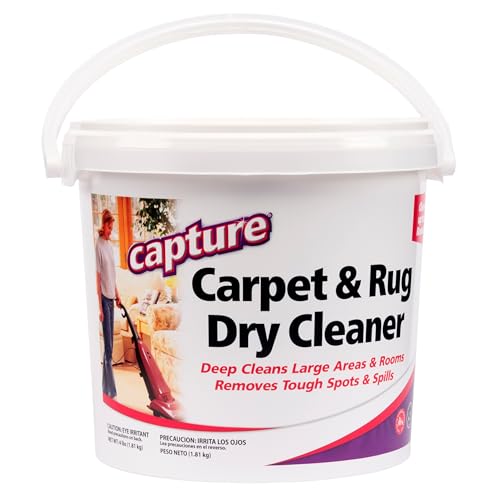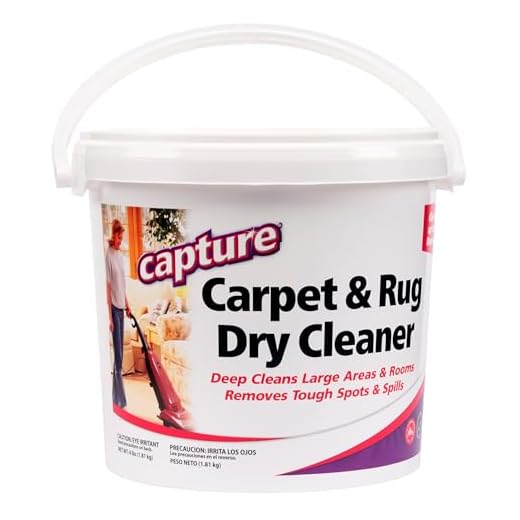




First, grab some paper towels or an old cloth. Blot the area gently to soak up any moisture. Avoid rubbing, as that can push the residue deeper into the fibres. This initial step is crucial to ensure you don’t set the stain further.
Next, mix a solution of cool water and a few drops of mild dish soap. Dampen a clean cloth with this mixture and gently dab the stained area. The aim is to lift the stain, not saturate the carpet. Rinsing the cloth frequently helps prevent spreading the stain.
Once you’ve treated the area, use another cloth dampened with plain water to remove any soap residue. Afterward, blot the area dry with a towel. If the stain persists, a mixture of white vinegar and water can be tried, again ensuring to blot rather than rub.
Lastly, sprinkle some baking soda over the area once it’s dry to help eliminate any lingering odours. Leave it for several hours before vacuuming it up. This will leave your carpet smelling fresh and looking clean.
Removing Stains from Textured Fibres
Start with a plastic spatula or a dull knife to gently lift the solid residue without rubbing it further into the fibres. Work from the outside toward the centre to avoid spreading the stain. Dispose of the waste responsibly.
Prepare a solution using a tablespoon of mild dish soap mixed with two cups of lukewarm water. Dampen a clean cloth with this mixture, then blot the stained area, avoiding excessive moisture. Repeat this blotting process with a fresh part of the cloth until the stain starts to lift.
Neutralising Odours
To tackle lingering scents, combine equal parts white vinegar and water in a spray bottle. Lightly mist the affected area, allowing the solution to sit for about 10 minutes. Blot again with a clean cloth until the area is dry, ensuring no residue remains.
Final Touches
Once the area is dry, vacuum the fibres to restore their original texture. If necessary, consider using a professional cleaning service for persistent stains or regular maintenance to preserve the quality of your flooring.
Immediate Actions to Take After the Accident
First, grab a pair of disposable gloves to protect your hands. Using a plastic bag, carefully pick up the solid matter, ensuring you don’t push it deeper into the fibres. Seal the bag tightly and dispose of it immediately.
Next, take a soft cloth or paper towel and gently blot the affected area. Avoid rubbing, as this can spread the stain and damage the fabric. Keep dabbing until you’ve absorbed as much moisture as possible.
Prepare a mixture of cold water and a small amount of mild detergent. Dampen a clean cloth with this solution and lightly dab the stained area. Work from the outside towards the centre to prevent spreading the residue.
Once the stain is treated, use a separate cloth dampened with plain water to remove any soap residue. Blot again with a dry towel to absorb excess moisture.
Finally, allow the area to air dry completely. If needed, fluff the fibres with your fingers once dry to restore their original texture.
Choosing the Right Cleaning Products for Wool Rugs
Select a gentle, pH-balanced solution designed for delicate fibres. Avoid anything with bleach or ammonia, as these can damage the texture and colour of your rug.
- Enzymatic cleaners: These are particularly effective for organic stains. They break down the proteins in messes, making it easier to eliminate odours.
- Natural options: Consider solutions made from vinegar and baking soda. They are less harsh and can be effective in dealing with stains.
- Commercial products: If you prefer store-bought cleaners, look for ones specifically labeled as safe for natural fibres. Always conduct a patch test on a small, inconspicuous area first.
For ongoing care, maintain a cleaning routine with products that help protect the fibres. Regular maintenance can prevent build-up and keep your rug looking fresh.
If you notice changes in your pet’s eating habits, like sudden disinterest, it might be worth checking out this article on why does my dog suddenly not like his food. It can provide insight into their health and well-being, which indirectly affects cleanliness around the home.
Step-by-Step Guide to Removing Stains and Odours
For immediate stain treatment, grab a paper towel or absorbent cloth to blot the area. Avoid rubbing; just dab gently to soak up moisture. When the surface is less wet, mix a solution of lukewarm water and a few drops of mild detergent. Use a clean cloth to apply the mixture, working from the outside of the stain towards the centre.
Rinsing and Drying
After treating the area, dampen another cloth with plain water and blot the spot to remove any soap residue. Follow this by sprinkling a generous amount of baking soda over the damp area. It absorbs lingering scents effectively. Allow it to sit for several hours, or ideally overnight, then vacuum thoroughly. This will not only help with odour but also refresh the fibres.
Dealing with Persistent Odours
If any scent remains, consider a vinegar solution. Mix equal parts white vinegar and water, apply it to the affected area, and let it sit for about 15 minutes. Blot again with a clean cloth, then rinse with water. Repeat this process if necessary. Once satisfied, ensure the area is well-ventilated for drying. Fresh air is key to removing any residual smells.
Preventative Measures to Avoid Future Incidents
Establish a designated area outside for your pet’s bathroom needs. This not only helps in training but also ensures your home remains clean. Consistency is key; take your furry friend to this spot regularly, especially after meals and playtime.
Consider using training pads indoors if your companion is still learning. Place them in an easily accessible area to encourage usage. Gradually transition to outdoor relief once your pet is comfortable.
Regular exercise plays a significant role. A well-exercised pet is less likely to have accidents indoors. Schedule daily walks and play sessions to keep your mate active and satisfied.
Monitoring your pet’s diet is crucial. High-quality food can lead to more predictable bathroom habits. Pay attention to any changes in behaviour or bowel movements, as they may indicate digestive issues that need addressing.
| Measure | Description |
|---|---|
| Designated Area | Create a specific spot outside for bathroom needs. |
| Training Pads | Use pads indoors for easier cleanup during training. |
| Regular Exercise | Engage in daily walks and playtime to reduce accidents. |
| Monitor Diet | Provide high-quality food and observe changes in habits. |
Establishing a routine helps your pet understand expectations. Praise and reward them for using the correct area, reinforcing positive behaviour. Consistency and patience are your best allies in preventing future messes.
FAQ:
What is the best way to remove dog poop from a wool rug?
To effectively remove dog poop from a wool rug, first, gently scoop up the solid waste using a plastic bag or a paper towel, being careful not to rub it into the fibres. Next, prepare a cleaning solution by mixing a small amount of mild dish soap with warm water. Dampen a clean cloth with the solution and blot the stained area, working from the outside towards the centre to prevent spreading. Rinse the cloth with clean water and blot again to remove any soap residue. Finally, use a dry cloth to absorb excess moisture and allow the rug to air dry completely.
Are there any specific products I should use for cleaning dog poop off a wool rug?
It is advisable to use mild, wool-safe cleaning products when tackling dog poop stains on a wool rug. Look for enzymatic cleaners specifically designed for pet messes, as they help break down organic matter and eliminate odours. Always test any product on a small, inconspicuous area of the rug first to ensure it does not damage the fibres or colour. Avoid harsh chemicals or bleach, as these can harm wool.
How can I prevent stains from dog poop on my wool rug in the future?
To help prevent future stains from dog poop on your wool rug, consider placing the rug in an area where your dog does not frequently go. You might also train your dog to use a designated bathroom area outdoors. Regularly inspecting your dog’s bathroom habits can help catch accidents early. Additionally, promptly cleaning up any mess will minimise the chance of staining. Using a protective spray designed for rugs can also offer an extra layer of defence against stains.
What should I do if the stain from dog poop has set in?
If a dog poop stain has set in on your wool rug, it may require a more intensive cleaning approach. Start by mixing a solution of white vinegar and water (equal parts) and apply it to the stained area with a soft cloth. Blot gently to lift the stain, and then rinse with a cloth dampened with clean water. If the stain persists, you may need to consult a professional cleaner who specialises in wool rugs, as they have access to specialised equipment and products that can more effectively treat stubborn stains.
Can I use a steam cleaner to clean dog poop from my wool rug?
Using a steam cleaner on a wool rug is not recommended, especially for cleaning dog poop. The high heat and moisture from steam cleaning can damage the natural fibres of wool and may cause the rug to shrink or lose its shape. Instead, it’s better to stick to gentle cleaning methods, such as blotting with mild soap and water or using an appropriate enzymatic cleaner for pet stains. If you’re considering professional cleaning, inquire about their methods to ensure they are suitable for wool.
What are the first steps to take when cleaning dog poop off a wool rug?
Begin by carefully removing any solid pieces of dog poop using a plastic bag or a spatula. Be gentle to avoid pushing the mess further into the fibres of the rug. Once the solid waste is removed, use a paper towel to blot any remaining moisture or residue. Avoid rubbing, as this can damage the wool fibres. After blotting, it’s wise to prepare a cleaning solution, which can be made from mild dish soap diluted in warm water. Test this solution on a small, inconspicuous area of the rug first. Once confirmed safe, apply it to the stained area using a clean cloth, gently blotting to lift the stain.








